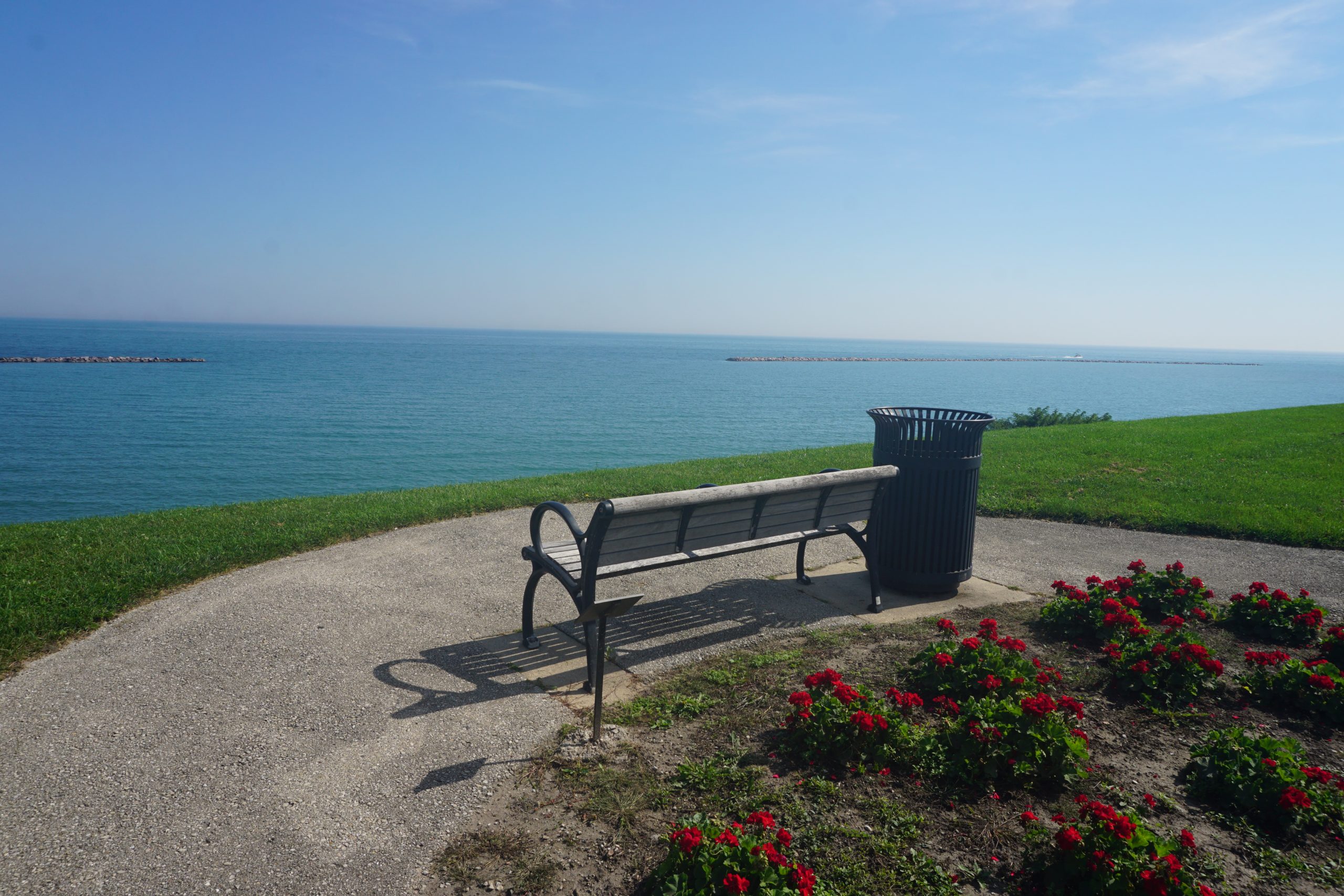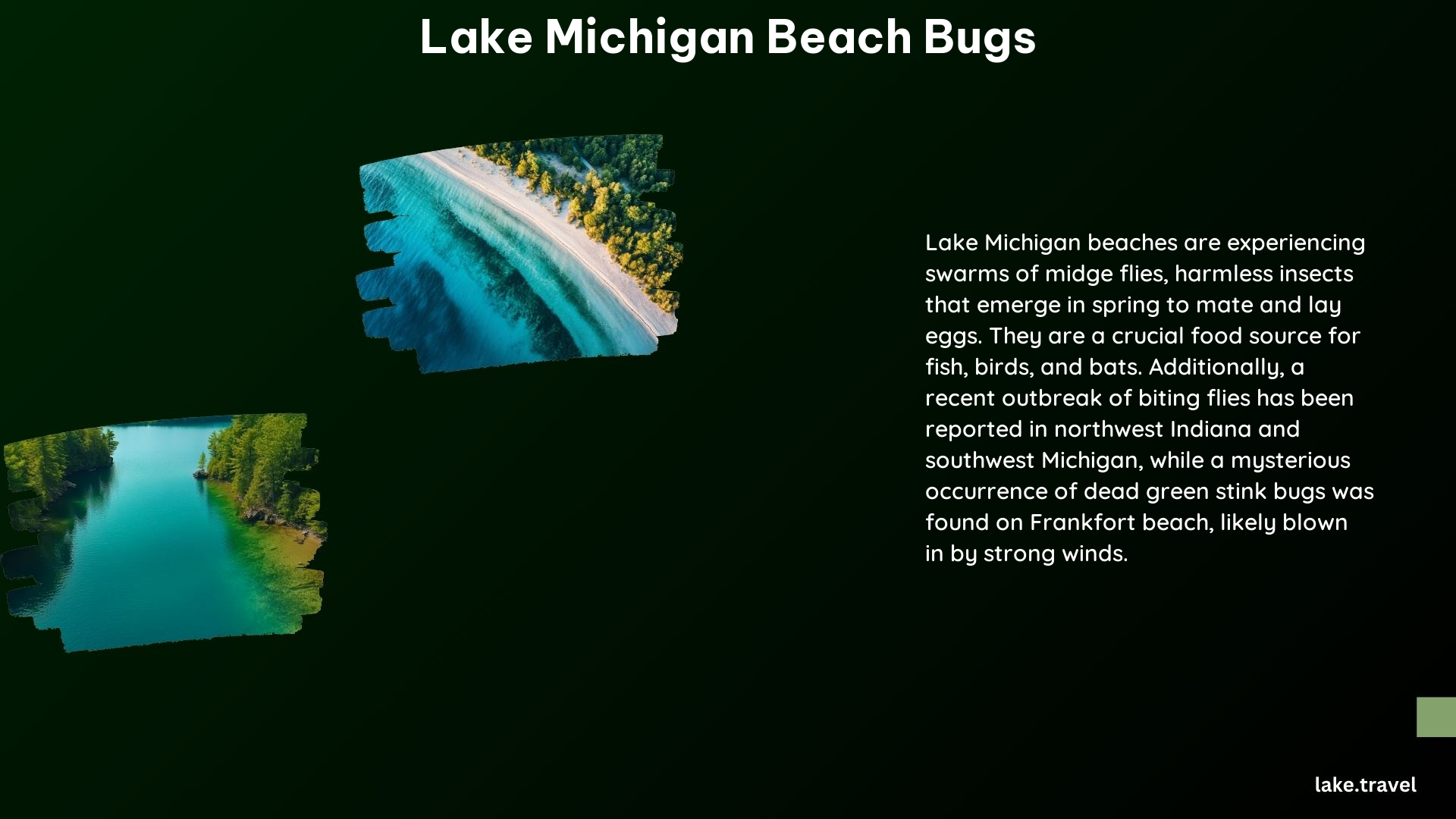Lake Michigan beaches are known to have a diverse array of bugs, particularly during the spring and summer months. From harmless midges to pesky biting flies, understanding the common types of bugs found on these beaches can help you better prepare for your lakeside adventures.
Midge Flies: The Harmless Lake Dwellers

Midge flies, also known as “lake flies,” are a common sight on Lake Michigan beaches. These small, mosquito-like insects are completely harmless and do not bite. Instead, they are attracted to light and can swarm in large numbers, often mistaken for their more troublesome counterparts.
Midge flies play an important role in the ecosystem, serving as a food source for fish, birds, and other aquatic animals. Their emergence is typically most prominent in the spring, particularly in April and May, with their numbers declining as the summer progresses.
Black Flies: The Biting Nuisance

Black flies are a type of biting fly that can be a nuisance to beachgoers on Lake Michigan. These small, dark-colored insects are known for their painful bites, which can cause irritation and swelling. Black flies are often found in areas with still or slow-moving water, making them a common sight near the lake’s edge.
Stable Flies: Another Biting Culprit
Stable flies are another type of biting fly that can be encountered on Lake Michigan beaches. These flies, which resemble house flies, feed on the blood of mammals and birds, including humans. While their bites may not be as painful as those of black flies, they can still be a source of discomfort for beachgoers.
Green Stink Bugs: Occasional Beach Visitors
Green stink bugs are not typically associated with aquatic environments, but they can occasionally be found on Lake Michigan beaches, particularly after inclement weather. These insects live on plant nectar and are not known to bite humans, but their presence can still be a curiosity for beachgoers.
Protecting Yourself from Lake Michigan Beach Bugs
To enjoy your time on the Lake Michigan beaches without being bothered by biting flies, consider the following tips:
- Wear Protective Clothing: Opt for long-sleeved shirts, long pants, and closed-toe shoes to minimize exposed skin.
- Use Insect Repellent: Apply insect repellents containing DEET, picaridin, or oil of lemon eucalyptus to exposed skin and clothing.
- Avoid Peak Fly Hours: Try to visit the beach during the middle of the day, as biting flies are typically more active in the early morning and late evening.
- Stay in Well-Ventilated Areas: Avoid areas with still or slow-moving water, as these can attract biting flies.
- Bring a Buff or Net: If you’re concerned about midges, a buff or net can help prevent them from getting into your mouth or nose.
By understanding the types of bugs you may encounter and taking the necessary precautions, you can enjoy your time on the beautiful shores of Lake Michigan without the nuisance of biting flies.
Unique Characteristics of Lake Michigan Beach Bugs
- Midge Flies:
- Harmless and do not bite
- Attracted to light and can swarm in large numbers
- Important food source for aquatic life
-
Emerge in large numbers during spring, decline by summer
-
Black Flies:
- Known for their painful bites
-
Often found in areas with still or slow-moving water
-
Stable Flies:
- Feed on the blood of mammals and birds
-
Can be a source of discomfort for beachgoers
-
Green Stink Bugs:
- Not typically associated with aquatic environments
- Occasionally found on beaches, especially after bad weather
- Live on plant nectar and do not bite humans
Conclusion
Lake Michigan beaches are home to a diverse array of bugs, each with its own unique characteristics and behaviors. By understanding the common types of bugs you may encounter, you can better prepare for your lakeside adventures and enjoy your time on the beach without the nuisance of biting flies.
Remember, taking the necessary precautions, such as wearing protective clothing, using insect repellent, and avoiding peak fly hours, can help you make the most of your Lake Michigan beach experience.
Reference:
– Lake Michigan Beaches: A Guide to the Best Spots
– Insects of the Great Lakes Region
– Midges: The Unsung Heroes of Lake Ecosystems
